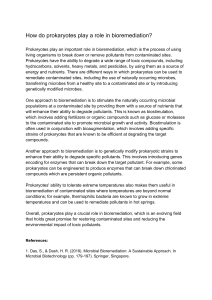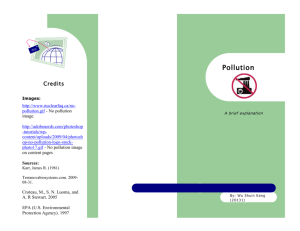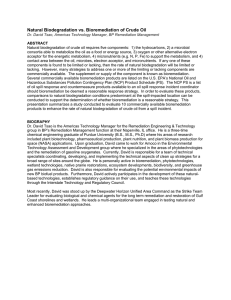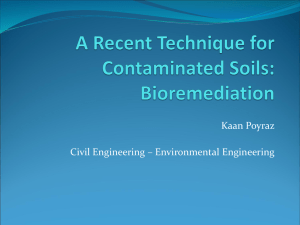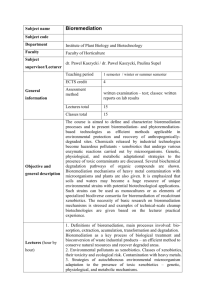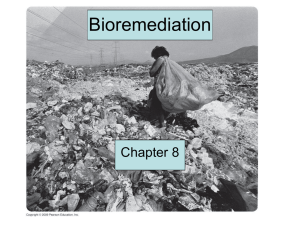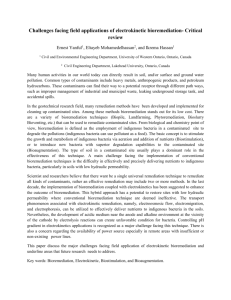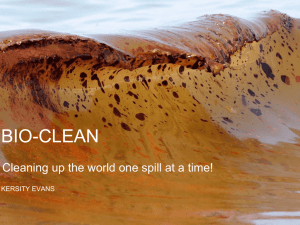Lecture #3 - Bioremediation
advertisement
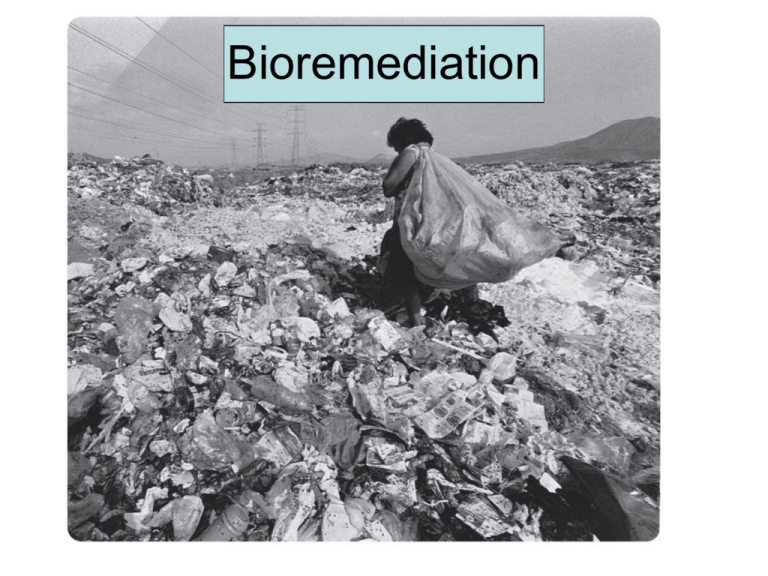
Bioremediation Hydraulic Fracturing Why do we even need it? • We can’t seem to stop polluting – Inorganics • Uranium, technetium, sulfur, sulfuric acid – Explosives • RDX, TNT – Polyaromatic hydrocarbons • creosote – Chlorinated hydrocarbons • Trichloroethylene, PCBs, pentachlorophenol – Petroleum hydrocarbons • Gas, gas additives (MTBE), diesel • From mid-1980’s up to 90’s numerous attempts were made to design GMO for environmental release for pollutants and heavy metals (USGS). – Failures to program: bacteria doesn’t behave in a predictable fashion from the lab. What is bioremediation? The use of bacteria and fungi and plants to break down or degrade toxic chemical compounds that have accumulated in the environment What are environmental contaminants? • Pollutants – naturally-occurring compounds in the environment that are present in unnaturally high concentrations. • Xenobiotics – chemically synthesized compounds that have never occurred in nature. – Examples: – Examples: • • • • crude oil refined oil phosphates heavy metals • pesticides • herbicides • plastics Groundwater contamination • Groundwater constitutes 96% of available freshwater in U.S. • 95% of potable water in rural areas of U.S. comes from groundwater • In 2014, EPA confirmed that 42 states had various amounts of 260 different pesticides in their groundwater • Most Polluted States: California, Wisconsin, Arizona, Florida, North Carolina, Texas, New York, Nevada, Pennsylvania and Illinois Groundwater contamination • Cost of cleanup is in the $ trillions • Issues that are still hotly debated – How clean is clean? What Makes Bioremediation a Promising Approach? • permanence – contaminant is degraded • potentially low cost – 60-90% less than other technologies Economics of in-situ vs. ex-situ remediation of contaminated soils • Cost of treating contaminated soil in place $80$100 per ton • Cost of excavating and trucking contaminated soil off for incineration is $400 per ton. • Over 90% of the chemical substances classified as hazardous today can be biodegraded. Contaminants Potentially Amenable to Bioremediation ____________________________________________ Readily degradable ____________ _ Somewhat Difficult to Generally degradable degrade recalcitrant _____________ _____________ _____________ fuel oils, gasoline creosote, coal tars chlorinated solvents (TCE) dioxins ketones and alcohols pentachlorophenol (PCP) some pesticides and herbicides polychlorinated biphenyls (PCB) monocyclic aromatics bicyclic aromatics (naphthalene) What challenges exist for bioremediation of pollutants and xenobiotics? • Pollutants – may exist at high, toxic concentrations – degradation may depend on another nutrient that is in limiting supply • Xenobiotics – microbes may not yet have evolved biochemical pathways to degrade compounds – may require a consortium of microbial populations Phytoremediation • Drawbacks – Only surface soil (root zone) can be treated – Cleanup takes several years Environmental Consequences of Large Oil Spills Center rectangular plot (arrow) was treated with inorganic nutrients to stimulate bioremediation Petroleum Biodegradation • • • Diverse bacteria, fungi, and some cyanobacteria and green algae can oxidize petroleum products aerobically Oil-oxidizing activity is best if temperature and inorganic nutrient concentrations are optimal Hydrocarbon-degrading bacteria attach to oil droplets and decompose the oil and dispense the slick
